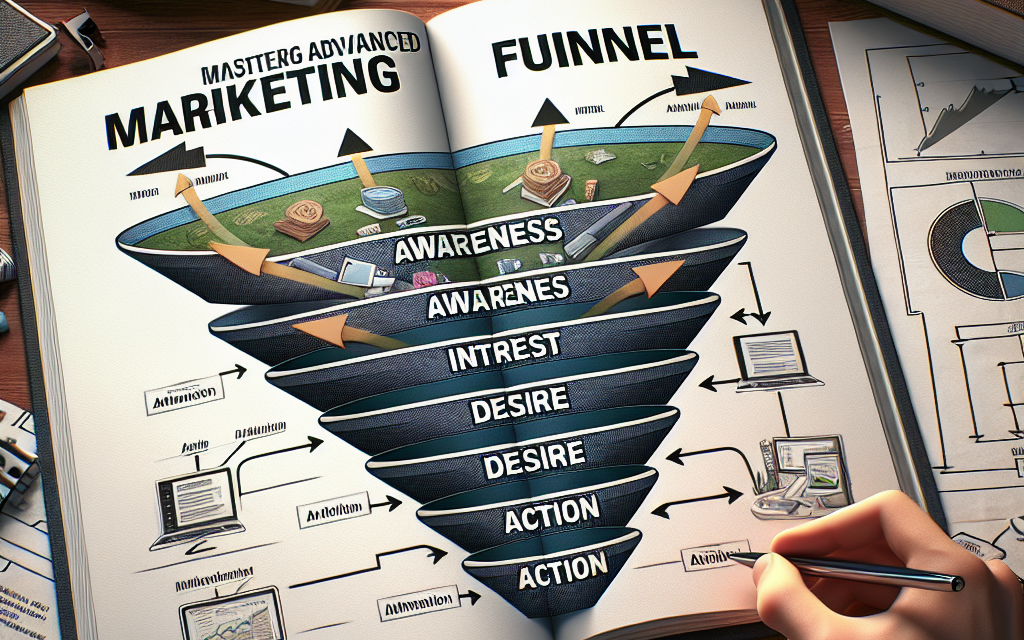In the world of digital marketing, a well-designed funnel can make all the difference between merely attracting leads and converting them into loyal customers. Advanced marketing funnels that integrate automation can streamline your efforts and significantly increase your ROI. In this article, we’ll walk you through the key steps to mastering advanced marketing funnels using powerful WordPress tools.
What is a Marketing Funnel?
A marketing funnel represents the journey that a customer goes through from the moment they first become aware of your brand, all the way to the point of making a purchase. It typically comprises three main stages:
- Awareness: Introducing your product or service to potential customers.
- Consideration: Helping them evaluate whether your offering addresses their needs.
- Decision: Encouraging them to make a purchase.
By creating automated processes for each stage, you can enhance the user experience and increase conversions.
Step 1: Define Your Target Audience
Before creating your funnel, it’s crucial to understand who your audience is. Use tools like Google Analytics or Hotjar to gather insights about your audience, including demographics, interests, and behaviors.
Action Steps:
- Conduct surveys to gather feedback.
- Utilize market research tools to identify pain points and needs.
Step 2: Choose the Right Plugins
For WordPress users, choosing the right plugins is essential for building an effective marketing funnel. Some recommended plugins to consider are:
- Elementor: For creating stunning landing pages.
- WooCommerce: If you’re selling products, this plugin will help you manage sales efficiently.
- WPForms: An excellent tool for creating high-converting forms.
Check out the official WordPress plugins repository for more options and documentation.
Step 3: Create a Compelling Lead Magnet
A lead magnet is an incentive offered to potential customers in exchange for their contact information. This could be an eBook, web seminar, or a discount code. Make sure it’s valuable enough to entice users at the top of your funnel.
Action Steps:
- Design your lead magnet using Canva.
- Use WPForms to create a signup form that integrates with your email marketing service.
Step 4: Build Your Landing Pages
Once you have your lead magnet ready, it’s time to create optimized landing pages. You’ll want the design to be simple but engaging, and the call-to-action (CTA) clear.
Action Steps:
- Use Elementor or Thrive Architect to create high-converting landing pages.
- A/B test different versions of your landing pages to see what performs best.
Step 5: Automate Your Email Campaigns
Email marketing is an essential component of your funnel. After someone opts in, they should receive a series of automated emails that guide them further along the funnel.
Tools to Consider:
- Mailchimp: Great for beginner email marketers.
- ConvertKit: An excellent choice for advanced marketing automation.
Both integrate seamlessly with WordPress and can help simplify your email marketing efforts.
Step 6: Analyze and Optimize
Once your funnel is live, track its performance. Use tools like Google Analytics and the built-in analytics in your email service to see where users are dropping off. This data will inform your optimization efforts.
Action Steps:
- Regularly review funnel analytics.
- Make adjustments based on user behavior data.
Conclusion: Take Your Marketing Funnels to the Next Level
Mastering advanced marketing funnels can significantly impact your business’s success. By leveraging automation, you not only save time, but you also enhance the customer experience, making it easier for them to move through your funnel.
Call to Action
Are you ready to elevate your WordPress experience with advanced tools for creating marketing funnels? Discover the power of WafaTech NextGen WordPress hosting today! Enjoy uninterrupted service, top-notch support, and specialized tools suited for your digital marketing needs.
For further resources, be sure to check out the official WordPress documentation to aid you in your journey toward funnel mastery. Happy marketing!





